 |
 |
 |
| |
The association of coronary calcification with visceral adiposity in people living with HIV. Results from the Liverpool multiparametric imaging collaboration
|
| |
| |
IAS 2021 July 18-22
IAS: The association of cardiovascular risk factors and disease in people living with HIV in the UK: a retrospective matched cohort study - (07/21/21)
Presenter: Thomas Heseltine
Authors: T. Heseltine • (1 }, E. Hughes (2), J. Mathew (3), S. Murray (1 ), S. Khoo (4)
Institutions: (1) University of Liverpool, Liverpool Centre for Cardiovascular Science, Liverpool, United Kingdom, (2) Wirral University Teaching Hospital, Wirral, United Kingdom, (3) Royal Liverpool University Hospital, Liverpool, United Kingdom, (4) University of Liverpool, Institute of Translational Medicine, Liverpool, United Kingdom
Abstract:
BACKGROUND: Visceral adiposity has been demonstrated to have a significant association with subclinical cardiovascular disease in HIV-negative cohorts. We sought to investigate the association between coronary calcification seen on computed tomography with the presence of epicardial adipose tissue (EAT) volume, hepatosteatosis (HS) and their discriminatory abilities to predict cardiovascular disease (CVD) compared to Framingham risk score (FRS).
METHODS: Data was collected from the prospective Liverpool Multiparametric Imaging Collaboration (LMIC). Chest and abdominal cross-sectional imaging studies from the last 1 O years were analysed for the presence of coronary calcification and HS. EAT volume was quantified using QFAT semi automated machine learning software. We compared clinical and imaging covariates in those with elevated EAT volume and those without elevated EAT volume. We constructed a multivariate model using important clinical covariates to assess measures of ectopic fat deposition with coronary calcification. Receiver operator characteristic curves were constructed and the area under the curve was calculated to assess the predictive values of sequential models.
RESULTS: The LMIC database contains 1295 patients. There were 197 cases where assessment for coronary calcifications, EAT volumes and quantification of HS was possible. Coronary calcifications were also increased in the raised EAT volume (p<0.005). The sensitivity of FRS;10%, high EAT volume and presence of HS to detect coronary calcifications was 50%, 45.8% and 52.6% respectively. The specificity of FRS;10%, high EAT volume and presence of HS was 80.3%, 85.4% and 82.6% respectively. The discriminatory ability of FRS to detect coronary calcification was modest (area under the receiver operator curve [AUC) 0.798). The addition of HS and EAT volume improved the discriminatory ability of the model significantly (AUC:0.856).
CONCLUSIONS: The presence of raised EAT volume was significantly associated with coronary artery calcification. These findings highlight the unique role of ectopic fat in the development of CVD in HIV-positive patients. The additive discriminatory ability of the metrics of visceral adiposity to traditional risk factors highlights the potential clinical utility of measuring these. These results are hypothesis generating and further prospective study is required to evaluate the preventative/clinical utility of measuring HS and EAT volume in HIV cohorts.
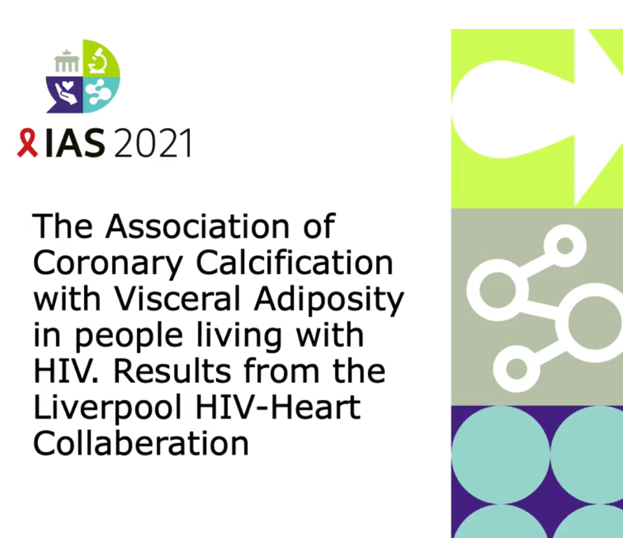
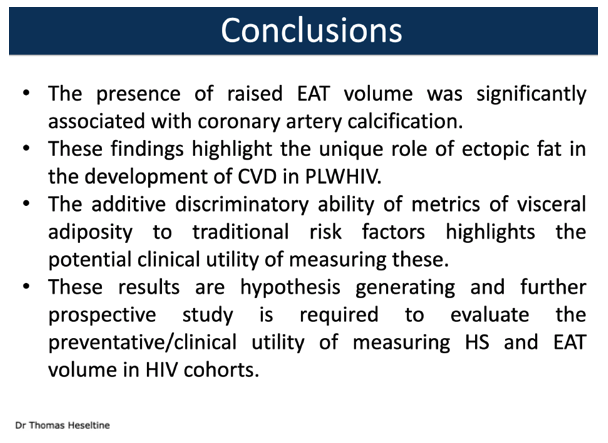
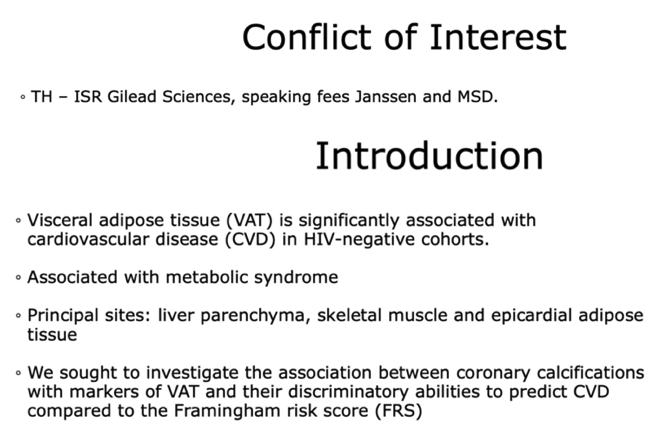
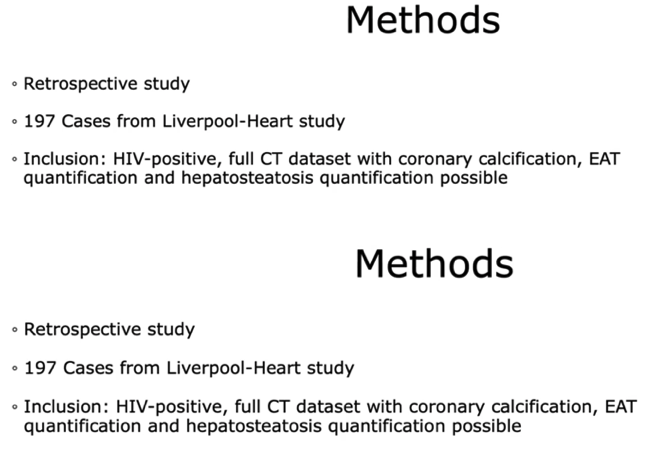
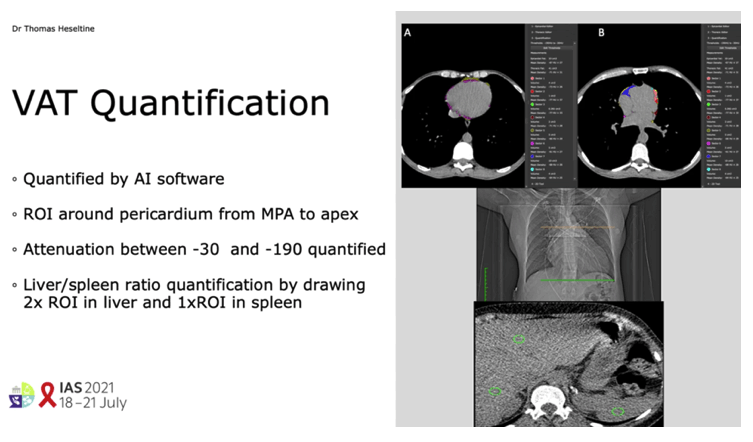
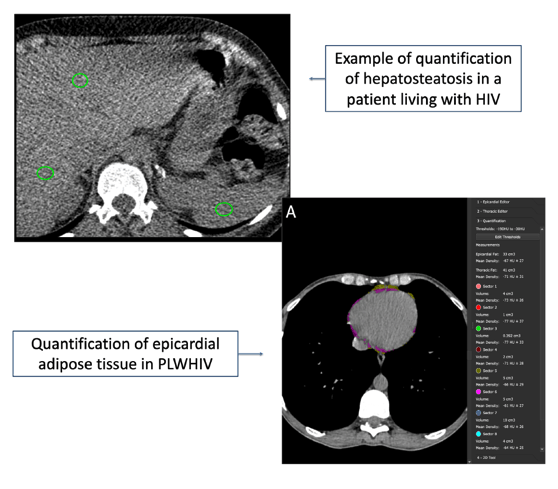
|
| |
|
 |
 |
|
|